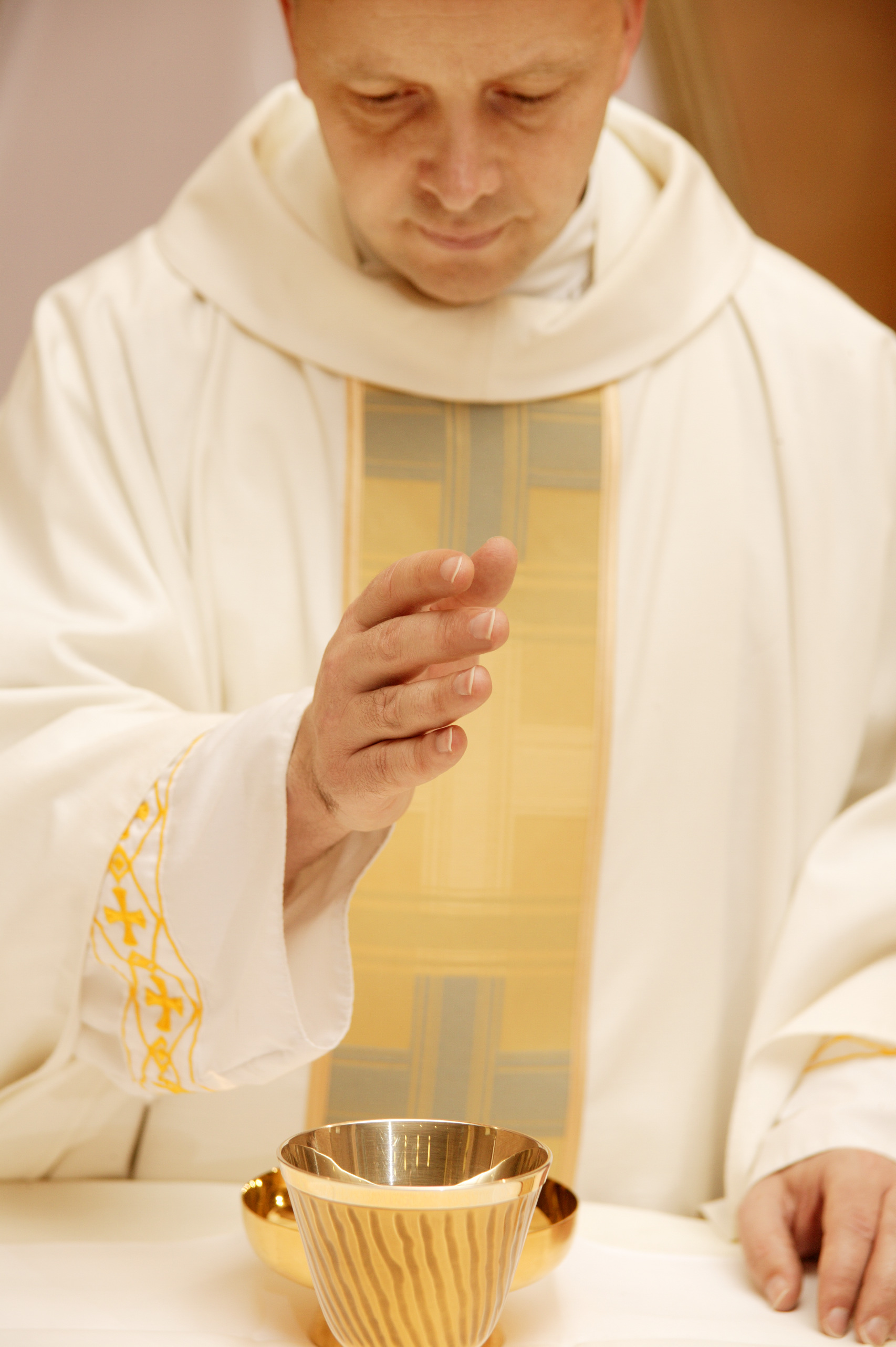 Many parish religious education programs host something called a “teaching Mass” which is a Mass during which the priest catechizes about the various parts and aspects of the Mass. Here’s an example. And another.
Many parish religious education programs host something called a “teaching Mass” which is a Mass during which the priest catechizes about the various parts and aspects of the Mass. Here’s an example. And another.
I understand the thinking behind doing a teaching Mass and I applaud pastors and catechetical leaders who are doing all they can to teach about the Mass. We want children and families to have a better understanding of the liturgy which is at the heart and center of the Christian life. We want to take advantage of the fact that they are present for a Mass to catechize at the same time.
Personally, however, I’m not a big fan of teaching masses (I admit to arranging them when I was in parish ministry). I find them to be much too wordy and tedious. On a deeper level, it is a mixing of actions and moments that each are intended to have their own place. Liturgy is a ritual celebration. When we interrupt ritual to explain it, it is like explaining a joke (or a kiss) to someone. You either get it or you don’t. Catechesis is something that is done outside of the liturgy (that’s not to say that the liturgy doesn’t also catechize by its very nature) so that people “get it.” We need to catechize about the Mass in preparation for celebrating it and we need to celebrate the ritual in such a way that the rituals, signs, and symbols are “done” with reverence and robustness so that the very actions teach.
Here’s a great article from my friend Nick Wagner at TeamRCIA about the notion of the right way and wrong way to do a “teaching Mass.”
The right way and the wrong way to do a “teaching Mass”—according to the pope
I’d love to hear your thought on this issue.




My own first thought is that we can still promote events called “teaching masses” but they can be arranged in such a way as to have a 10 or 15 minute catechesis before the Mass, preparing people to “look for” the major signs, symbols, words, and actions; followed by a robust and reverent celebration of the Mass; followed by another 10 or 15 minute catechesis that might include a Q & A with the priest. That would be a good time to talk about vessels, vestments, parts of the Mass, and so on.
Our RE program has had teaching masses in past years, bringing all classes, grades 1-5 into the church, with a priest presiding and the RE Director explaining. Yes, tedious. Last year the priest was unavailable so my class “acted out” the mass with the children taking the various roles of priest, deacon, eucharistic ministers, etc. Those who did not have a role were the assembly and gave the responses. Our DRE “directed” the children in their various roles. The children loved it as they love to role-play and they were much more attentive and I believe it was a more effective method of teaching the mass. I teach 5th grade.
Joe, the Directory for Masses with Children pretty much supports what you are thinking – See 12 and 13.
12. Even in the case of children, the Liturgy itself always exerts its own inherent power to instruct. Yet within religious-education programs in the schools and parishes the necessary importance should be given to catechesis on the Mass. This catechesis should be directed to the child’s active, conscious, and authentic participation. “Suited to children’s age and capabilities, it should by means of the main rites and prayers of the Mass, aim at conveying its meaning, including what relates to taking part in the Church’s life.” This is especially true of the text of the Eucharistic Prayer and of the acclamations by which the children take part in this prayer.
13. Various kinds of celebrations may also play a major role in the liturgical formation of children and in their preparation for the Church’s liturgical life. By the very fact of such celebrations children easily come to appreciate some liturgical elements, for example, greetings, silence, and common praise (especially when this is sung together). But care must be taken that the instructive element does not become dominant in these celebrations.
This is very helpful, Joyce. Thanks!
Joe,
We have been using the Homily to “teach” during the Mass. While our Parish priest will conduct his normal homily, he will then conclude by coming down into the congregation, stand in the aisle. We have done this at almost every mass, going over the various parts of the Mass.
We have found this to work very well. One such instruction was on worthy reception and how to receive communion at the altar. I was amazed at how many adults in attendance caught themselves being way to casual with their reception of the most Precious Body and Blood!
I think catechesis plays an important role in teaching masses, but it has to be done appropriately, I think interuppting something as special as a Eucharistic Prayer for catechesis takes away from the scriptural and spiritual context.
Hi Joe,
I think that a ‘dry mass’ works better. The kids can ask all their questions, and there is not this weird shifting between catechesis and liturgy. I think that the shifting just serves to confuse kids. (Once I was doing something to teach the rosary, and then we were trying to pray a decade. One kid raised his hand – because something occurred to him around Hail Mary number three. The difference between time to talk and time to pray was not as obvious as I would have hoped! I think that the same thing happens in teaching masses.)
Keeping it clear for the kids – so that they know what is expected of them – I think works well. Also, a ‘dry mass’ can go faster in spots, because some things can be condensed.
I’ve never attended or heard of a teaching Mass.
My instinct is to take care of teaching in the classroom.
Joe,
Do you have some type of a guide that would help clergy to do a “teaching Mass”? I am not envisioning an actual Mass – I’m talking about teaching the children the parts of the Mass and what prayers they will respond to. I am a DRE for our church and want to incorporate a teaching into our retreat for First Holy Communion. In the past we practiced receiving unconsecrated bread and wine, but unfortunately alot of the children haven’t been raised going to Mass on Sunday. So, I would like them to practice going to Mass as well as receiving. I appreciate any help you can give. We use Loyola Press’ Christ Our Life series. Thank you.
Hi Marie and thanks for your question. I’m glad that you are approaching this not as an actual Mass but rather as a teaching moment about the Mass. That is the most appropriate way to do this. I can offer you the following: I have a free video called “A Walk Through the Mass” that invites us to look at what we are doing in each part of the Mass. Here is a link: https://www.youtube.com/watch?v=vhpWKxXhKqw&t=2s. You can use a Mass card or a “missalette” to walk through the parts of the Mass and pause the video after each part to explore the actual words and prayers of the liturgy. I hope this is helpful! Let me know!